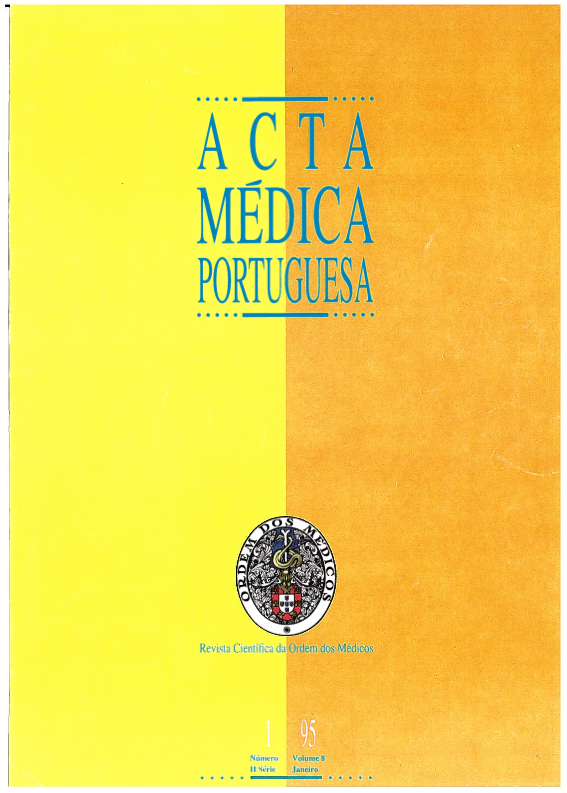Anti-melanoma immunoscintigraphy.
DOI:
https://doi.org/10.20344/amp.2653Abstract
Nuclear Medicine has always contributed to the study of oncologic diseases. Immunoscintigraphy, one of its more recent developments, consists of the evaluation of the biodistribution of antibodies, directed against tumoral antigens and labelled with radionuclides. This technique, which has proven of special interest in some neoplasias, was used for the first time in 1983 in malignant melanoma of the skin. The antibody that has been more frequently used and which is used in the Instituto de Medicina Nuclear (IMN) of the Faculdade de Medicina de Lisboa, is antibody 225.28S, an IgG2a directed against a high molecular weight antigen present in the melanoma cell. In the IMN, we started immunoscintigraphy anti-melanoma in February 1992. During these two years, we have performed 67 exams, 44 on patients with malignant melanoma of the skin and 23 on uveal melanoma. We have obtained true positive rates and true negative ones, respectively, of 87.5% and 90% in melanoma of the skin, and 94% and 83% in uveal melanoma. It has been shown that the main clinical contribution of immunoscintigraphy for malignant melanoma of the skin is the study of loco-regional and distant metastases, namely those clinically unsuspected, as well as in the differential diagnosis of a lesion already known. In uveal melanoma, it is accepted that immunoscintigraphy may be useful in the evaluation of the primary lesion, namely in the differential diagnosis with other intra-ocular lesions.Downloads
Downloads
How to Cite
Issue
Section
License
All the articles published in the AMP are open access and comply with the requirements of funding agencies or academic institutions. The AMP is governed by the terms of the Creative Commons ‘Attribution – Non-Commercial Use - (CC-BY-NC)’ license, regarding the use by third parties.
It is the author’s responsibility to obtain approval for the reproduction of figures, tables, etc. from other publications.
Upon acceptance of an article for publication, the authors will be asked to complete the ICMJE “Copyright Liability and Copyright Sharing Statement “(http://www.actamedicaportuguesa.com/info/AMP-NormasPublicacao.pdf) and the “Declaration of Potential Conflicts of Interest” (http:// www.icmje.org/conflicts-of-interest). An e-mail will be sent to the corresponding author to acknowledge receipt of the manuscript.
After publication, the authors are authorised to make their articles available in repositories of their institutions of origin, as long as they always mention where they were published and according to the Creative Commons license.









